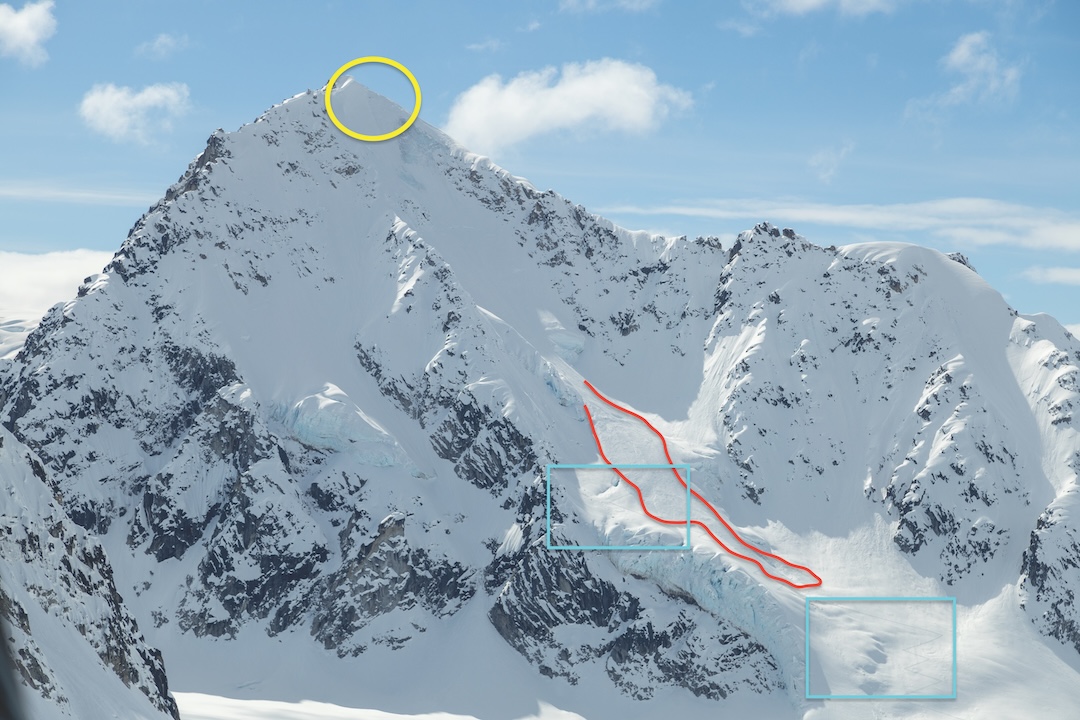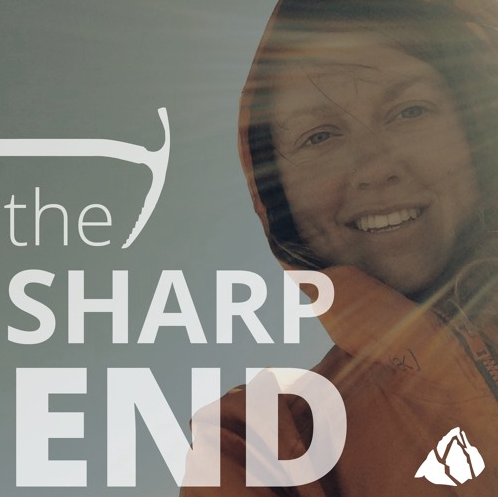Avalanche
Alaska, Denali National Park, Pika Glacier, Italy's Boot

On May 7, a party of five backcountry skiers set out from their base camp on the upper Pika Glacier with the objective of summiting and skiing Italy’s Boot (7,510 feet) via its north face. Italy’s Boot is a prominent and popular destination on the western edge of the Pika Glacier, as that body of ice flows into the main Kahiltna Glacier. The route required a flat 2.5-mile tour down-glacier to the toe of the face, then a 2,600-foot ascent of the glaciated bowl to the upper summit pitches. Their plan was to ski the route on the descent.
The party left camp at 9:10 a.m. They discussed options when they arrived at the bottom of the climb. The obvious route climbed directly up the face to a high bergschrund. At that point they would decide if proceeding to the summit was feasible. Because of open crevasses along the route, the group stayed roped together.
The team skinned to the bergschrund. The surface snow was powder, sitting atop a stable base. Above the bergschrund the slope became much steeper, and to the climbers’ right lay an expanse of blue ice. The party stayed roped up to manage crevasse hazards. They acknowledged that without intermediate protection the rope would provide scant security in the event of a fall.
The snow went from stable to faceted as the team approached exposed rocks near the bottom of the summit pitch. For 200 feet, progress slowed, but after the leader passed the rocks, the climbing became easier and the snow more supportable. The pitch steepened to nearly 50°. Because of the relative ease of travel and the use of an ice axe, Whippet, and crampons by each team member, they placed no protection. Eventually, the leader reached the summit ridge and belayed the rest of the team. The party summited under clear skies at 2:25 p.m. with immaculate views of the Alaska Range.
Upon dropping in, the first skier (Skier 1) decided to ski unroped onto the summit panel, a 400-foot pitch of steep snow. While traversing after his first turn, he triggered a wind slab avalanche. The avalanche broke about six feet above him, knocking him off his feet. He slid 50 feet, but self-arrested on the firm bed surface using a Whippet.
The group lowered a rope to Skier 1. With a belay, he skied the rest of the pitch and built a snow anchor 180 feet down. The remaining four skied or downclimbed to Skier 1 with the safety of a belay. They repeated the process for one more rope length (two of the five skiers elected to sideslip, unroped), until they neared the cliffband above the bergschrund. At that point, the group unroped and skied back to the glacier.
ANALYSIS
The weather over the four days leading up to the incident had been mostly unsettled, with 8 to 16 inches of snow falling in the Pika region. The group noted a mostly right-side-up, stable snowpack in the areas they had traveled. This included terrain of a similar aspect to the Italy’s Boot run. They also observed some melt-freeze crusts on solar aspects. They had noted dry loose avalanches on a variety of terrain and wet debris on the Italy’s Boot apron during their flight onto the glacier. On the day of the Italy’s Boot descent, the weather was clearing, after another seven inches had fallen the previous night.
On May 7, the group made snowpack assessments during the ascent of their intended ski run. They found the majority of the slope to be dry powder sitting atop a stiff snowpack. Above the bergschrund, assessments became more challenging, as the group was roped up with 40 feet between individuals. In hindsight, being roped up exposed the entire group to avalanche hazard—there could have been severe consequences had the avalanche occurred during the ascent. This was the first technical mistake made and, though it ended up as a near miss, it was mere luck that the avalanche did not release.
Starting his descent, Skier 1 dropped in and traversed back to the team’s bootpack. There he made the turn that released the slope. Fortunately, Skier 1 was an expert skier and skilled alpinist whose training, instinct, and Whippet likely saved his life as he arrested his fall.
The avalanche ran approximately 2,000 feet of the 2,600-foot ski run. The avalanche was a soft slab, failing on the new snow/old snow interface, specifically running on the bed surface of glacier ice that comprised the skier’s left half of the upper pitch. The group believes the ice may have been more reactive than the old snow interface, hence the size and sensitivity of the avalanche. The group classified it as a size D3 (large and destructive) avalanche. Pilots from the local air base said they had rarely, if ever, seen this mountain release in such a way.
The second error the group made was not belaying Skier 1 as he dropped in. If Skier 1 had ski cut the slope with a rope on, the slope would have still avalanched but the fall would have been less consequential.
The third, overarching error can be attributed to social factors that have been identified as contributing to avalanche accidents. The group was on the glacier for only one week. They had a list of objectives including Italy’s Boot. Thus, summit fever or commitment could have been a key contributing factor. This very experienced party had often skied together, though some members had more mountaineering skills than others. The expert halo may have discouraged some members from speaking up about concerns with the route or travel.
Finally, it has been identified that a four-person party is the optimal size of a group skiing in avalanche terrain. Two is considered the minimum and in parties with more than four people, concerns can be drowned out by others. This can lead parties to be caught in the classic FACETS (Familiarity, Acceptance, Consistency, Expert Halo, Tracks/Scarcity, and Social Facilitation) avalanche heuristic traps. The group size may also have contributed to a communication breakdown.
Once Skier 1 was safely on an anchor, the group did well by staying calm and effecting a safe descent. During the process of self-rescue, the group communicated well, stayed focused, displayed good teamwork, and descended methodically. (Sources: Skier 1 and the Editors.)

